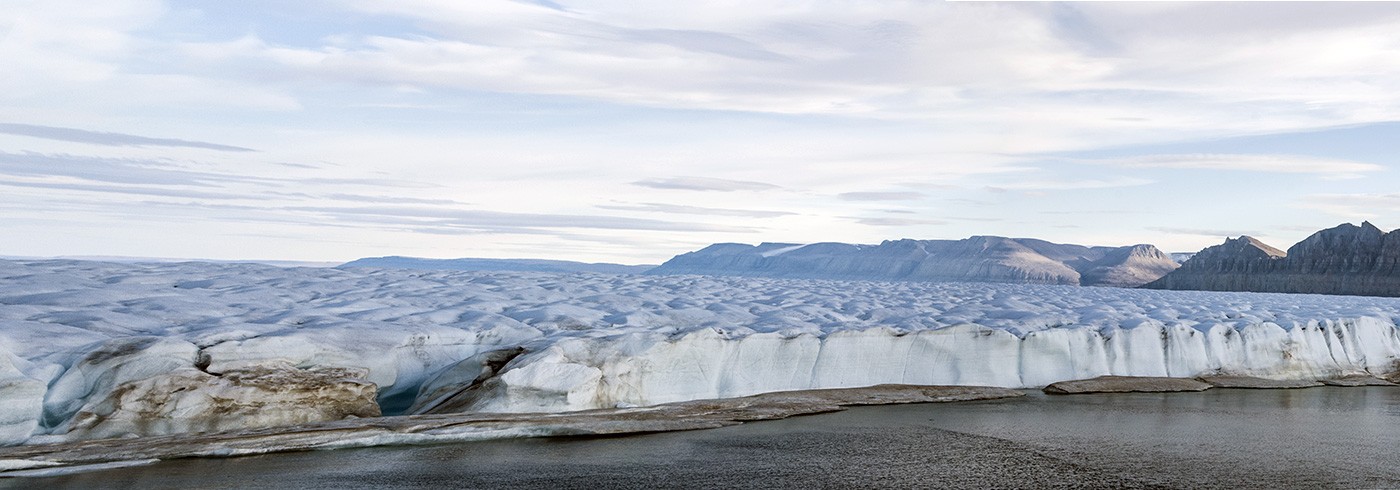Today Sunday 26 July, Swedish Icebreaker Oden steamed into the fjord where Thule Air Base is located on northwestern Greenland. This completes an 18 days long journey from southwestern Sweden to Thule. We have designed Oden’s route across the Atlantic and along the Greenland west coast specifically to collect new depth measurements of unmapped parts of the seafloor with the installed multibeam echo sounder. I can see from the online tracker built by Rezwann Mohammad that Captain Eric Andersson and crew did an exceptionally good job of following our proposed route! It feels almost like we are spying: http://oden.geo.su.se/map
The goal with this route is to complement the depth database of the International Bathymetric Chart of the Arctic Ocean (IBCAO) and to contribute to the new NASA research program “Ocean Melting Greenland”, which focuses on the interaction between the ocean and the Greenland Ice Sheet through all so called outlet glaciers (http://www.iarpccollaborations.org/news/1556) . PhD student Francis Freire from the Department of Geological Sciences has been onboard to see that the multibeam echo sounder is working continuously and that is it regularly calibrated with sound speed measurements of the ocean water. Francis also operates the installed chirp sub-bottom profiler, collecting information about the uppermost 50–200 m of bottom sediments, and the mid-water sonar, which provides information about the water structure and marine life such as fish and plankton.
All of the scientific crew that will take part in the Petermann Glacier 2015 expedition will travel to Greenland tomorrow in order to meet up with Oden in Thule. We will first go to Kangerlussuaq with a regular Air Greenland flight from Copenhagen and from there fly with an American Air Force plane to Thule.
During the last days I have monitored the sea ice situation in the Petermann fjord intensively. Nares Strait separates Greenland from Ellesmere Island. The strait and all connected fjords fill up with dense sea ice every year during winter. The sea ice becomes land fast and difficult to penetrate even for the strongest ice breakers. Practically every summer, the Nares Strait clears out from most of the sea ice. Andreas Muenchow from University of Delaware is an oceanographer that spent a lot of time studying the Nares Strait region and the oceanography of the Petermann Fjord area. Andres has written a very nice explanation on how the sea ice dynamics in the Nares Strait works: http://icyseas.org/2015/07/13/oceanography-of-nares-strait-ice-flushing
The flushing of sea ice from Nares Strait has come late this year, but during the last week we have seen a lot of sea ice movement in the area which is promising for our expedition.

